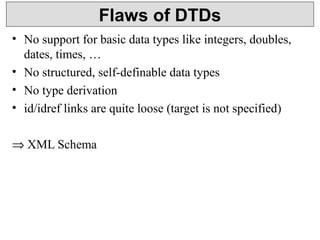This document provides an introduction to XML, including:
- XML stands for eXtensible Markup Language and allows users to define their own tags to provide structure and meaning to data.
- XML documents use elements with start and end tags to organize content in a hierarchical, tree-like structure. Elements can contain text or other nested elements.
- Attributes within start tags provide additional metadata about elements. Well-formed XML documents must follow syntax rules to be valid.
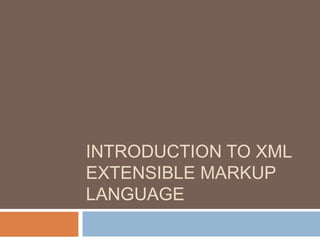
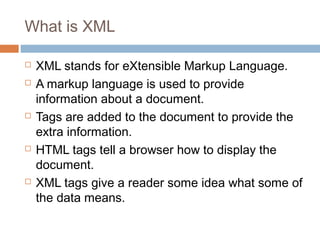




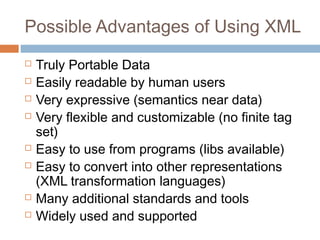

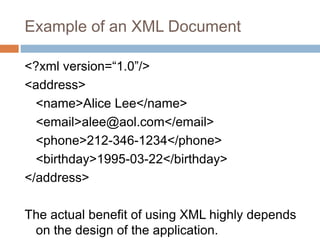
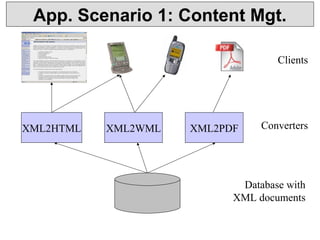


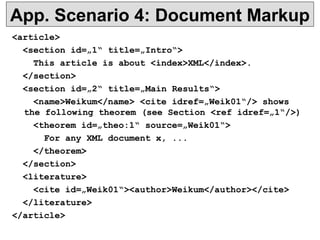


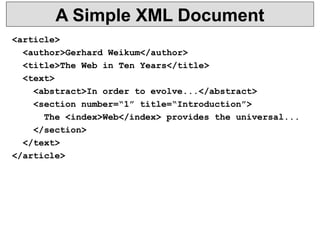

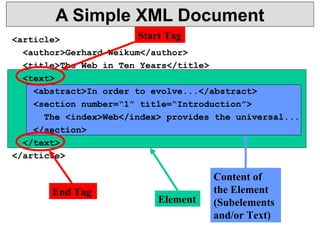

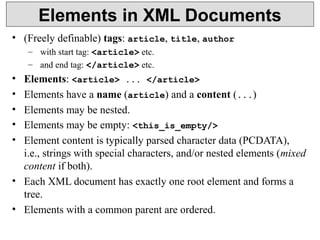
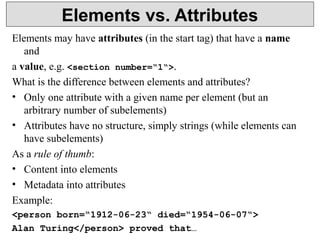
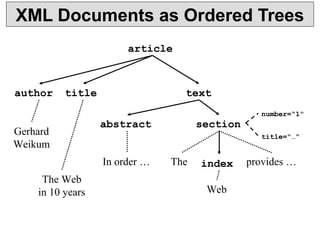
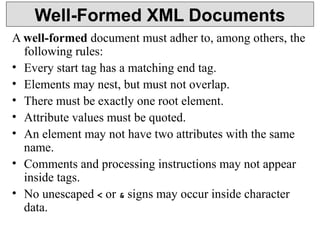
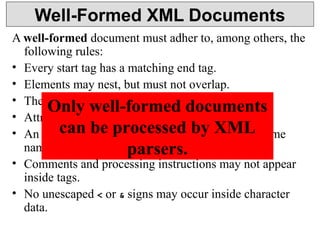


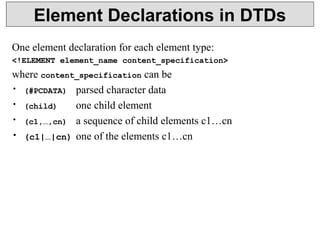




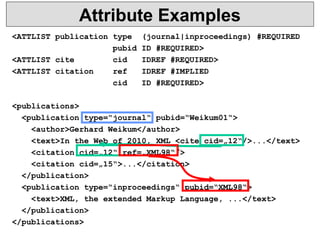

![Linking DTD and XML Docs
• Internal DTD:
<?xml version=“1.0“?>
<!DOCTYPE article [
<!ELEMENT article (title,author+,text)>
...
<!ELEMENT index (#PCDATA)>
]>
<article>
...
</article>](https://image.slidesharecdn.com/xml-141217042322-conversion-gate01/85/Xml-34-320.jpg)
